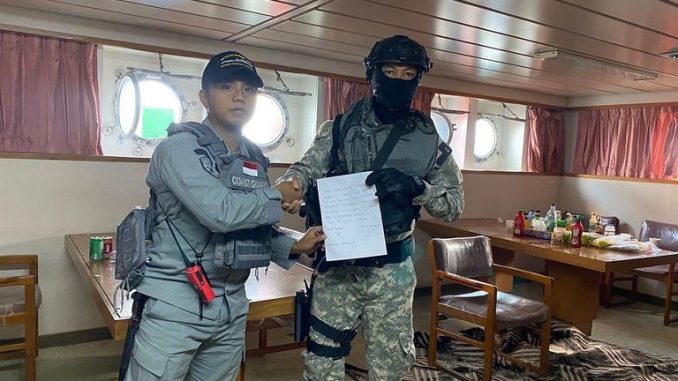
SHAH ALAM: MMEA’s Special Task and Rescue Team (STAR) was instrumental in the seizure of an Iranian flagged oil tanker on July 7. The oil tanker MT Arman 114 was suspected of involvement in the illegal transshipment of crude oil to another vessel without a permit, the Indonesian Coast Guard or Bakamla announced on July 11.
Arman 114 was carrying 272,569 metric tons of light crude oil, valued at $304 million, when it was seized. Arman 114 was spotted initially in Indonesian waters off Batam with another tanker identified as S.Tinos, while conducting the illegal transshipment on July 7.
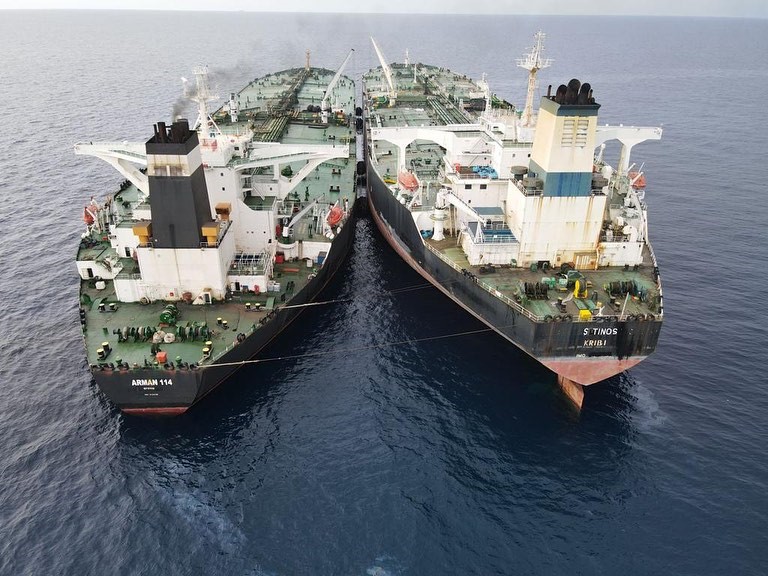
However, both vessels tried to flee even with one of them (Arman 114) had been boarded by Indonesian coast guard personnel. As Arman 114 had sailed into Malaysian waters, Bakamla contacted the APMM/MMEA for help in stopping the vessel.
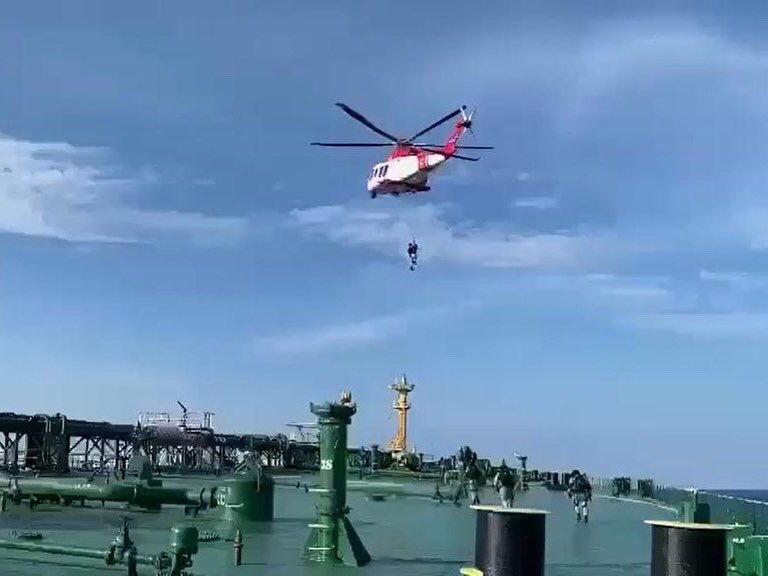
A STAR team flew to scene on board an AW139 helicopter and fast roped onto the vessel and finally subdued the crew. The oil tanker and its crew were handed over to Bakamla officials.
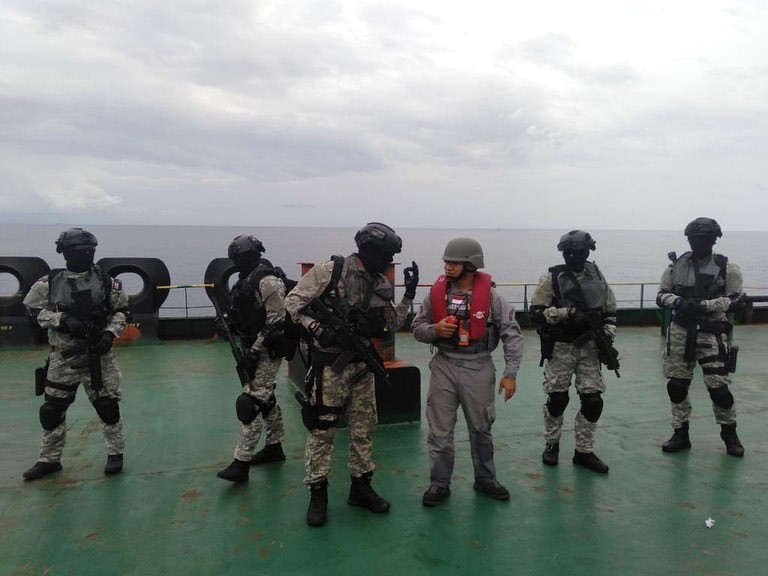
According to Bakamla, the list of charges against Arman 114 include illegal transhipment; waste dumping and Automatic Identification System (AIS) spoofing (during the incident, Arman 114 AIS showed it was supposed to be in the Red Sea).

Arman 114 is currently berthed off Batam for further investigations. MMEA has not issued any statement on the incident. Once it does, this post will be updated.
— Malaysian Defence
If you like this post, buy me an espresso. Paypal Payment

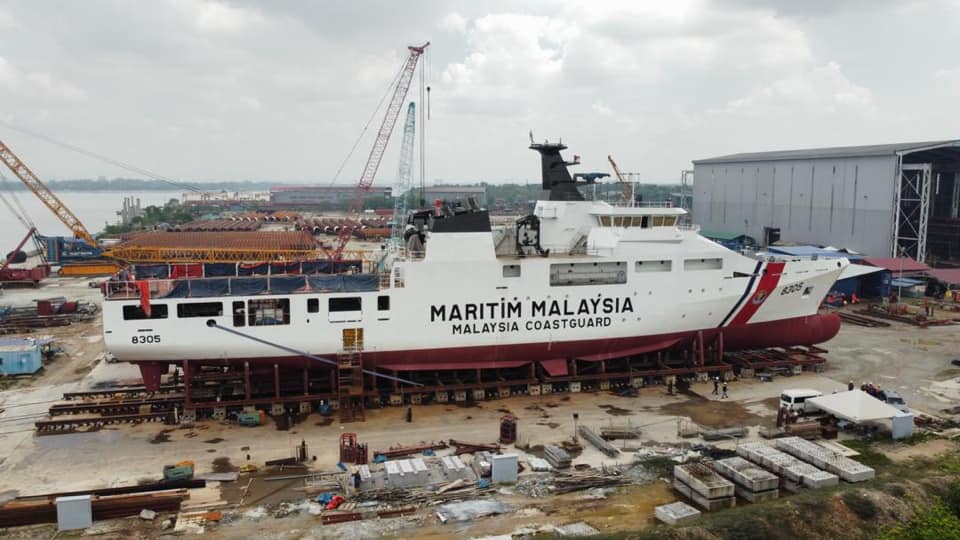
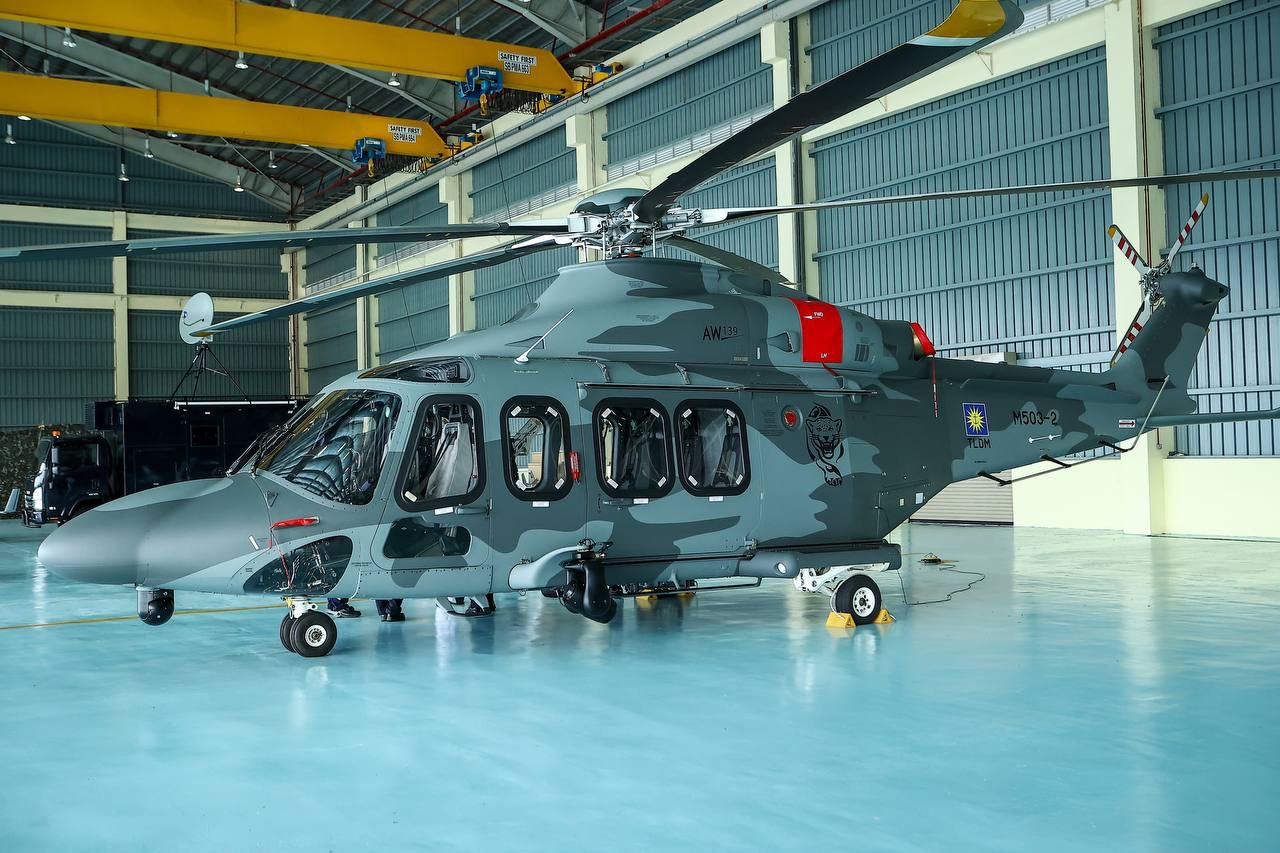
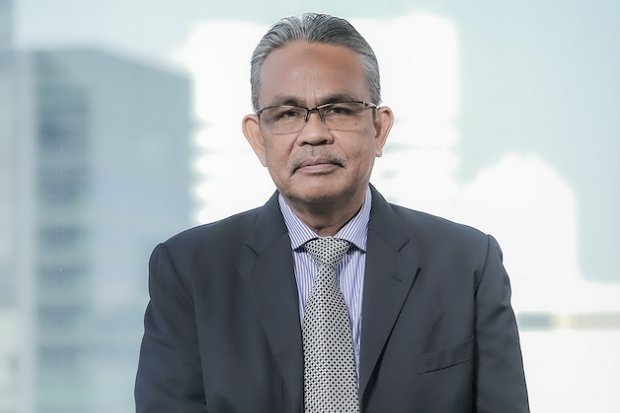
Wow, pretty cool. Congrats to both agencies especially our MMEA STAR team
And Chuan Hong 68 case probably goes NFA..
Its all well and good to see there are mutual cooperation and communication between our nations coastguards, but I am wondering if MMEA would have known about this intrusion if they weren’t informed and requested for help from Bakamla?
Congratulations to the STAR team on mission well done.
MMEA needs more resources to fulfil its duties. For 1 good news like this, plenty more news of MMEA not able to help due to limited resources.
Well done MMEA.
What happend to S.Tinos?
It managed to escape
When its said that it managed to escape, does it mean that it totally disappeared or just escaped to international waters?
Likely it sail into international waters
Kind of odd that this ghosting of AIS could easily happen and the ship is dozens of miles away, I can’t imagine what would be if terrorists could hijack highly flammable tankers, spoof the AIS so authorities could not track them, and do a 911 on major ports. Its likely the damage and lives lost could be similar to Beirut port explosion or worse.
those tankers are huge
look at this picture
https://www.malaysiandefence.com/wp-content/uploads/2023/07/F0v0SwEaQAE3Yki.png
Seems like the BAKAMLA ship is small right?
https://tni.mil.id/mod/news/images/normal/9314b2f72769e25f19f7158a63c19881.jpg
Actually that ship is 80m long
each of those tankers are likely more than 200m in length
“nication between our nations coastguards, but I am wondering if MMEA would have known about this intrusion if they weren’t informed and requested for help from Bakamla?”
There are a chain of radars in the Melaka Straits operated by the Maritime Institute but I doubt we have any coverage in the Batam are. If the situation was reversed would Bakamla have detected an intrusion our waters? Who knows.
Thats the reason Singapore put a lot of effort in their maritime domain
“If the situation was reversed would Bakamla have detected an intrusion”
Well Indonesia is an archipelago nation so maritime security is infinitely more difficult on their end, but im not interested on intrusions into THEIR borders. Im more interested on intrusions into OUR borders and what can we do better to mitigate this.
… – “each of those tankers are likely more than 200m in length”
And are massive when seen at sea. You have to se one up close to really get a sense of their size.
They however have small number of crews which accounts for the fact the hat when seen up close at sea one never sees anyone on deck or anywhere.
“be if terrorists could hijack highly flammable tankers”
One merely has to scuttle a tanker at certain points along the Melaka Straits to disrupt traffic. Even a temporary disruption in access would drive oil prices up and it would be problematic to clear.
” One merely has to scuttle a tanker at certain points along the Melaka Straits to disrupt traffic. Even a temporary disruption in access would drive oil prices up and it would be problematic to clear ”
One of many reasons why MMEA needs to have large salvage / AHTS / emergency towing tugs in their fleet. To be able to fight fire, tow and move these massive ships in the straits.
https://connectgujarat.com/wp-content/uploads/2020/09/IMG-20200906-WA0030.jpg
“Well Indonesia is an archipelago nation so maritime security is infinitely more difficult”
Indeed but that was not a matter of debate. Whether or not they would have detected an intrusion in our waters is dependent on whether they have sensors in the area; just like how the availability of sensor would have determined the answer to your original question. Also the area of concern is a choke point at the top or base of one of the worlds busiest waterways; nor say off Ambon or somewhere else in the archipelago with mainland traffic and sensors in place.
You asked a question and I answered it. Whether or not we would have detected the intrusion is dependent largely on whether we have sensors in the area like we do in the Nelajs Straits or whether we happened to have an asset in place at the right time.
“not interested on intrusions into THEIR borders. Im more interested on intrusions into OUR borders and what can we do better to mitigate this”
Whether or not YOU’RE interested is irrelevant to me; you asked a theoretical question; so did I.
“Im more interested on intrusions into OUR borders and what can we do better to mitigate this.”
Right. The upper cases help make a point.
… – “One of many reasons why MMEA needs to have large salvage / AHTS / emergency towing tugs”
There are many things the MMEA should get but given its financial constraints it has to focus on what it needs the most or what is more likely to be used.
I book I have [can’t remember which] mentions a Cold War plan for Soviet operatives to scuttle a ship at a narrow point in the Melaka Straits to block it to American traffic. If you recall in the late 1970’s there was a proposal by various countries including Japan to internationalise the straits on the grounds that the littoral states couldn’t ensure security [this was objected by China which had just normalised ties with us].
In the 1990’s there was a proposal by various countries to have joint security in the area; again the littoral stares were not keen on the idea. In the early 2000’s Japanese aid to the fledging MMEA also had the Melaka Straits in mind. It’s often overlooked that the littoral states adjacent to the straits includes Thailand which was approached by us and Indonesia to join in the joint patrols.
I have no idea what’s the condition of the chain of radars we have which are operated by the Maritime Institute [ops centre at Lumut] but they should be in need of replacement at this stage and a plan many years ago [way before the MMEA came with bro existence] for the RMN and Maritime Institute to have a common picture never materialised.
A major step in improving maritime security would be for the RMN, MMEA and Maritime Institute to have a common picture.
The chain of radars is called Malaysian Maritime Sea Surveillance System or SWASLA. It is operated by MMEA/APMM as does the ops centre in Lumut. SWASLA covers most of the peninsula now and parts of Sarawak and Sabah as well. The last time around RMN and MMEA do not have a common picture as no one could figure out who would pay for linking their systems. At that point both said the other party should pay for it. Perhaps, they have figured it out by now.
The “Malaysian Maritime Sea Surveillance System” in the Melaka Straits cane from Raytheon Canada and I believe the MMEA’s mobile radars are from Amcorp [spelling?].
Apart from the radars operated at the reefs in the Spratys [a recent Majalah Tiga episode showed them] I have no idea if the RMN has any land based radars.
I am not sure whether the original radars came from Raytheon Canada but AMP Corporation was/is the current maintenance provider. They also (whenever they won the tender) provided maintenance for the radars in Sabah the ones donated by the US. Its subsidiary also uninstalled the Airbus/Hensoldt radar bought during H20 time as Defence Minister.
Yes, they also provided the mobile radar the old/new ones. Yes, the Home Minister make a meal of the mobile radar capabilities at LIMA 2023. The mobile radar is used a stop gap one whenever the one of the main radars goes offline due to maintenance. It was never intended to replace the main radars as due to its lower height and smaller antenna or placed at one area for extended period.
AMP Corporation also supplied three radars for RMN for OP Benteng and operated in Johor.
Thanks. It’s AMP not Amcorp. My mistake.
I remember the press release in 1994 [?] for the “Malaysian Maritime Sea Surveillance System” [for the Melaka Straits]. Prime contractor was Raytheon Canada.
Another radar operated was/is the U.S. supplied one for Ops Pasir.
Joe “Im more interested on intrusions into OUR borders and what can we do better to mitigate this.”
Stopped having 20 agency involved in maritime & borders enforcement & established a single unified borders force?
“You asked a question”
In OUR context not THEIRS.
@Zaft
“Stopped having 20 agency”
The problem in not so much having multiple agencies doing the same thing, but that their overlapping duties somehow created loopholes and then the lack of enforcement from each that allowed foreign entities to come in willy nilly. Regardless if it were MMEA who detected they should respond, if it were TLDM who detected first then they should respond, or Marin Polis for that matter. But my concern is if none of them had detected the intrusion if it weren’t for the prompt from Bakamla.
“In OUR context not THEIRS”
Well too bad; tough kitties. I answered it in a general context. BTW why not post everything in upper case while you’re at it; instead of half measures of you need aids to drive home a point.
Zaft – “Stopped having 20 agency involved in maritime & borders enforcement & established a single unified borders force”
Let’s just say there are a host of inherent reasons; some of which I’ve alluded to. Competition, bureaucracy and parochialism play a part. Once does are sorted out; redundancy sorts itself out.
The fact is we have a long and porous coastline; even if we had various issues sorted out and 20 times the assets we have: impossible to prevent each and every intrusion.
Can any MY agency can detect or not if not informed by bakamla or the other way around is not just about equipment but also about human also.
Cooperation is always needed even if advanced equipment installed and human are well trained.
Border is not about sovereignity but many things are about smuggling and cross-border crimes.
Join patrol which is already done several times in a year can reduce miscommunication in sovereignity issue and increase in tackling cross-border crime.
No idea why people keep calling it intrusion. In general despite ID & MY insisting that the straits is territorial water we both insisted that we respect the right for innocent passages as well.
What happened here is a crime syndicate breaking ID domestic law in ID territorial water that disallowed ship to ship transfer & try to flee into our territorial water so bakamla lose the right to act.
The straits is narrow at only 20ish km on the southern end at the same time Carry 1/3 of all international trade while we respect the right for innocent passages so even if we have enough radar & assets we can’t just go around checking every ship that point their noses our way.
Romeo – “Can any MY agency can detect or not if not informed by bakamla or the other way around is not just about equipment but also about human also”
Depends on a list of variables. There is no and never will be a blanket answer.
– Do we have any sensors in that area?
– Was an asset at sea at the right place and the right time? In this case it was.
– You can talk about cooperation all you want but it does exist and in this case the existing mechanism worked as intended.
– We can have all the assets we need but the costs is s get long and porous one.
Romeo – “s already done several times in a year can reduce miscommunication in sovereignity issue and increase in tackling cross-border crime”
Which is what the Border Committee [formed in the 1970’s] and various other platforms including the Joint Melaka Straits patrols are intended to facilitate.
Romeo – “talso about human“
Yes, obviously, and? You actually aware of manpower work .org issues at play which have affected things?
Zaft – “No idea why people keep calling it intrusion”
If a ship illegally enters one’s waters without prior permission it’s an “intrusion” – period/full stop. That’s why “people” call it an “intrusion” …
Zaft – “d that we respect the right for innocent passages as well”
“Innocent passage” and intruding in one’s territorial waters are two profoundly different things …
Zaft – “so even if we have enough radar & assets we can’t just go around checking every ship that point their noses our way”
No as I pointed out but with enough sensors we have a Lon accurate and live picture of traffic and with enough assets we can react rapidly …